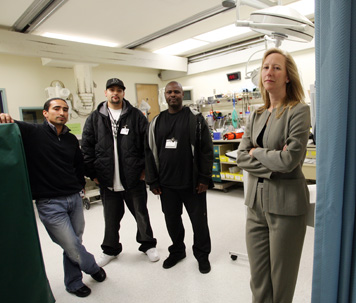SF Wraparound Project Plays Key Role in Defusing Gang Violence
Missionlocal.org reports on a story entitled "The Gang War That Wasn’t" in which representatives of the San Francisco Wraparound Project played a critical role in averting violence after angry members of rival gangs converged on SFGH's Emergency Room.
 Did the Mission avert a gang war?
Did the Mission avert a gang war?
At a community meeting last week at Mission Police Station, Capt. Greg Corrales for the first time offered details on the fatal shooting of Aldo "Trigger" Troncoso - the neighborhood's first homicide of the year - and the aftermath.
Stories of violence averted are not often told, but that's the story Corrales offered the assembled group, and repeated the following evening while delivering a special report to the Police Commission on gang violence in the Mission.
"Because of open communication," Corrales told the commission, "we were able to prevent more violence from happening."
Still, there was more trouble ahead. A shootout on March 2 left the intersection at 24th and Harrison littered with spent bullet casings and sent the victim to San Francisco General Hospital. Several people who attended the neighborhood meeting lived within a few blocks of the shooting. A few gave eyewitness accounts. "I do not," said one woman, "ever want to look out my window again and see a man crawling behind a car with blood coming out of his chest."
"We do know who the shooter was," Corrales told the group of neighbors. "We may not get him for that. But we'll get him for something." The victim, Corrales said, was a known Norteño, and a victim in four previous shootings.
A few hours after the shooting at 24th and Harrison, Corrales got word that a Sureño had just been shot in the Bayview. When police realized that he too was headed for SF General, where the waiting room had filled with angry Norteños, they asked the Community Response Network for help.
Corrales credits Project Wraparound, a follow-up program for the victims of violence run by SF General, for defusing the situation at the hospital. "There was not violence," he told the commission, "though there was huge potential. This is why there is such an incentive for open communication with community groups."
